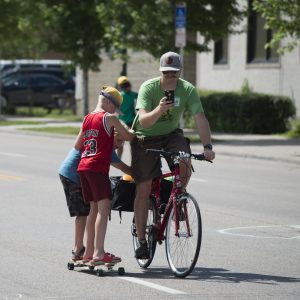Cycling is a double task. That means, while cycling we perform two tasks at the same time: (1) moving from one place to another, and (2) noticing potentially dangerous situations and reacting to them. The first task itself consists of two sub-tasks, which we have extensively discussed on other pages: (1) staying upright, and (2) steering. We denote these two sub-tasks jointly as “the movement task”. Noticing potentially dangerous situations is in competition with this movement task. This is very similar to the competition within the selective attention tasks that we have previously used as an example, such as a counting task and noticing a gorilla. Of course, we do not have to count balls while cycling, but we can be busy staying upright and steering.

The extent to which the perception of a potentially dangerous situation is impeded by competition depends on the extent to which the competing task is automated. In concrete terms, the more staying upright and steering is automated, the less competition there is for observing potentially dangerous situations. The neurocognitive basis of this phenomenon is that the prefrontal cortex is not only involved in preparing non-automated movements, but also in selectively focusing attention on the environment (for detecting potentially dangerous situations). The less the prefrontal cortex is involved in the preparation of non-automated movements, the more capacity is available for selectively focusing attention on the environment. After all, the prefrontal cortex is not good at multitasking,